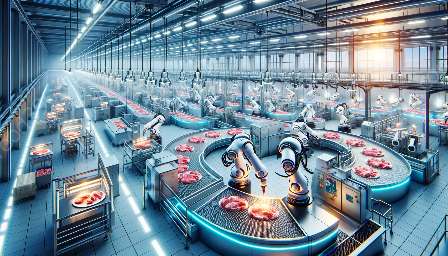Advancements in automation technologies are revolutionizing the meat industry, particularly in the area of meat grading. This article delves into the intricate relationship between automation, meat robotics, and meat science, shedding light on the technologies transforming meat grading processes.
The Role of Automation in Meat Grading
When it comes to meat grading, automation plays a pivotal role in streamlining processes, improving accuracy, and enhancing efficiency. Traditionally, meat grading involved manual inspection and assessment of various meat quality attributes such as marbling, texture, color, and fat content. However, with the advent of automation, this labor-intensive and time-consuming task has been significantly transformed.
Automated meat grading systems leverage cutting-edge technologies such as computer vision, machine learning, and robotics to assess and classify meat products with unprecedented precision and consistency. These systems are capable of analyzing a multitude of quality parameters in real-time, thereby enabling meat producers to make informed decisions based on accurate and reliable data.
Meat Robotics and Automation: Working in Tandem
Meat robotics and automation go hand in hand to optimize the grading process. Robotics has been integrated into automated meat grading systems to handle tasks that traditionally required human intervention. Robotic arms equipped with advanced sensors and actuators can delicately handle and position meat cuts for inspection and grading, ensuring that every part of the meat product is thoroughly assessed.
Furthermore, robotics facilitates the seamless transportation of meat products within the grading facility, enabling a continuous flow of items through the automated grading process. This not only enhances efficiency but also minimizes the risk of contamination and human error, leading to improved overall product quality.
Enhancing Meat Quality Through Automation
Automation in meat grading is closely linked to the principles of meat science, as it enables thorough analysis and evaluation of meat products to ensure optimal quality. By harnessing state-of-the-art technologies, meat producers can attain a comprehensive understanding of the composition and characteristics of meat, allowing for the identification of specific quality attributes and defects.
Machine learning algorithms deployed in automated grading systems can be trained to recognize patterns associated with high-quality meat, enabling them to distinguish superior cuts from those that may not meet the desired standards. This capability empowers producers to consistently deliver premium meat products to consumers, thereby enhancing their brand reputation and customer satisfaction.
The Future of Automation in Meat Grading
The evolution of automation in meat grading continues to unfold, promising even greater advancements in the near future. Emerging technologies such as hyperspectral imaging and spectroscopy are poised to further enhance the capabilities of automated grading systems, allowing for the analysis of meat properties at a molecular level.
Moreover, the integration of Internet of Things (IoT) technologies and data analytics will enable real-time monitoring and optimization of the entire meat grading process, leading to unprecedented levels of efficiency and quality control.
Conclusion
Automation in meat grading represents a transformative force within the meat industry, bridging the realms of meat robotics, automation, and meat science. By embracing these technologies, meat producers can elevate the standard of meat grading, thereby delivering superior products to consumers and driving the industry towards a future defined by innovation and excellence.

